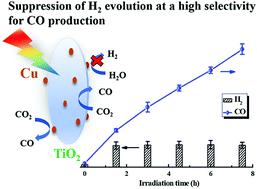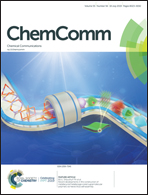Selective photocatalytic CO2 reduction on copper–titanium dioxide: a study of the relationship between CO production and H2 suppression†
Abstract
Low selectivity and the competing reaction of hydrogen evolution are two problems in photocatalytic CO2 reduction. Herein, we deposited highly crystalline metallic Cu nanoparticles onto TiO2 photocatalysts using a solvothermal method. They were found to convert CO2 into CO without any by-products. Importantly, hydrogen evolution can be suppressed after a reaction time of 1–2 h with a high generation rate and selectivity for CO production.



 Please wait while we load your content...
Please wait while we load your content...